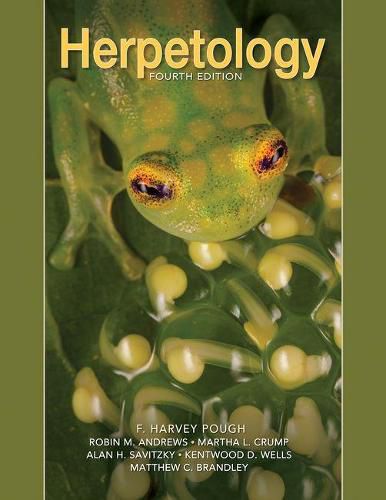Readings Newsletter
Become a Readings Member to make your shopping experience even easier.
Sign in or sign up for free!
You’re not far away from qualifying for FREE standard shipping within Australia
You’ve qualified for FREE standard shipping within Australia
The cart is loading…






Herpetology, Fourth Edition, explains why amphibians and reptiles, which are distantly related evolutionary lineages, are nonetheless grouped in the discipline known as herpetology, and describes the position of amphibians and reptiles within the evolution of vertebrates. Initial chapters present the fossil history of amphibians and reptiles and the phylogenetic relationships of extant groups, with descriptions of the biological characteristics of each family and photographs of representative species. The phylogenetic and biogeography chapters have been extensively revised to incorporate the most recent molecular phylogenetic information, including extensive discussion of the expanding field of phylogeography. Subsequent chapters consider amphibians and reptiles from morphological, physiological, ecological, and behavioral perspectives. The book concludes with a discussion of the threats facing amphibians and reptiles and approaches to conserving herpetological diversity.Herpetology, Fourth Edition, serves as a textbook for undergraduate and graduate-level courses and as a comprehensive source of information about amphibians and reptiles for professional biologists, hobbyists, and interested laypersons.
$9.00 standard shipping within Australia
FREE standard shipping within Australia for orders over $100.00
Express & International shipping calculated at checkout
Herpetology, Fourth Edition, explains why amphibians and reptiles, which are distantly related evolutionary lineages, are nonetheless grouped in the discipline known as herpetology, and describes the position of amphibians and reptiles within the evolution of vertebrates. Initial chapters present the fossil history of amphibians and reptiles and the phylogenetic relationships of extant groups, with descriptions of the biological characteristics of each family and photographs of representative species. The phylogenetic and biogeography chapters have been extensively revised to incorporate the most recent molecular phylogenetic information, including extensive discussion of the expanding field of phylogeography. Subsequent chapters consider amphibians and reptiles from morphological, physiological, ecological, and behavioral perspectives. The book concludes with a discussion of the threats facing amphibians and reptiles and approaches to conserving herpetological diversity.Herpetology, Fourth Edition, serves as a textbook for undergraduate and graduate-level courses and as a comprehensive source of information about amphibians and reptiles for professional biologists, hobbyists, and interested laypersons.